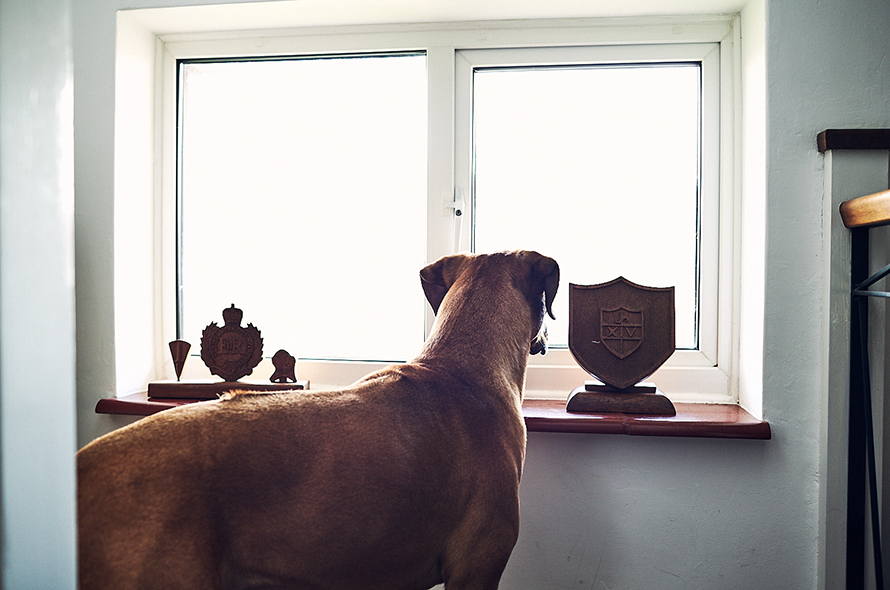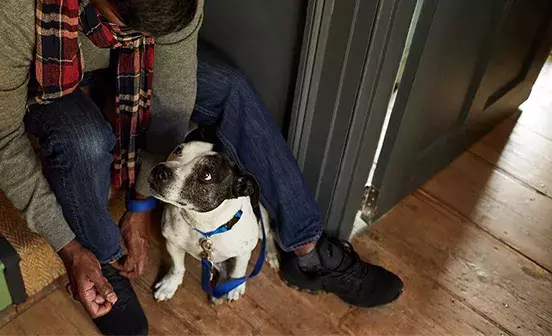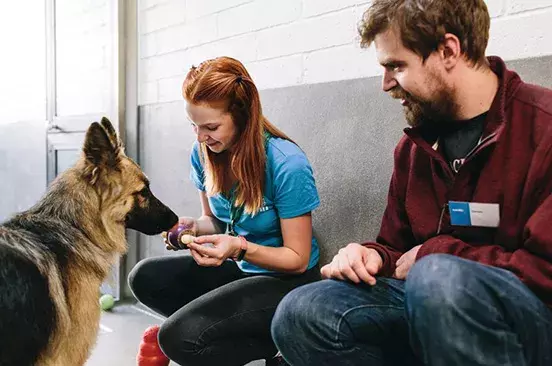Barking is a natural form of communication for your dog, and all dogs do it. So while we can deal with inappropriate barking that is particularly disruptive, and manage certain situations which make your dog bark, it is important to remember to be realistic, as you won’t be able to stop them barking completely.

To begin with, you will need to figure out why your dog is barking and then you can treat the cause or manage the situation.
You can follow along with the steps using this video, and they are also written out below.
Step 1: Why is my dog barking?
Dogs bark for lots of reasons. They might be excited, bored, frustrated, excited or even worried and they may bark at different times for different reasons.
For example, if your dog hasn’t had enough exercise, or doesn’t feel stimulated they may bark to signal that they are bored, or frustrated. Physical stimulation is very important, so you could try increasing your dog’s exercise, making their daily walks more fun or spending more time playing with them in the house or garden. Mental stimulation such as scent games, training, or interactive puzzle feeders would also help with this kind of barking.
Think about your dog’s daily routine. If they have a lot of free time to themselves, or there are certain points in the day you notice more barking these are good points to introduce training and activities. This will also give you some clues as to why they are barking.
Step 2: My dog barks for attention
You might find your dog’s barking starts when you aren’t giving them the attention they want. This could be attention in the form of physical interaction or play time. As an owner our natural reaction to this might be to give them what they want, or to tell them to be quiet. However, if you are giving your dog attention when they bark, this will actually encourage the behaviour. Even if the attention is something you think of as bad, like shouting, you are still giving your dog the attention they wanted in the form of a reaction.
Instead, when your dog barks for attention, try to ignore them. Stay silent and don’t give them eye contact. As much as possible, completely ignore them and stay still, until they stop. You might need to be patient for this one! Once they stop, calmly praise them and give them the attention they were looking for, which could be some fuss, play time or giving them a treat. Over time your dog will learn that barking doesn’t get them what they want.
As part of this, it’s a good idea to reward your dog when they are naturally being quiet on their own. At any point in the day when they are quiet and calm, give them some of the attention they enjoy, to show them they don’t have to shout for it.
Step 3: My dog barks when people walk past the house
If your dog barks when people walk past the house, there are two ways to tackle it: with training, and by managing the situation. A simple solution can be to block the window or door so your dog can’t see people walking past, but this isn’t always possible.
Another option is to step in and try to distract your dog before they start to bark. It’s a good idea to observe your dog and learn the signs that they’re about to bark at something. As soon as you see these signs, ask them to perform an action that you can treat them for instead, such as a sit or a down. If you can’t distract your dog in time before they bark, don’t worry. For this situation, it’s a good idea to teach your dog an action like a recall, or a “watch me”. This will mean you can call them to you once they’ve started barking and then reward them for completing that action instead.
We’ve got more information about teaching your dog a recall and a “watch me” on the Battersea YouTube channel, and the pet advice section of our website. Once you have your dog’s focus you can play with them or engage them in another activity to keep them occupied until the trigger outside has gone.
Step 4: My dog barks when people knock on the door
If your dog is barking at the door they might be excited about people arriving, or they might be trying to warn them off and defend you. If your dog is attempting to defend or alert you, if the person knocks and then doesn’t enter your dog will actually feel rewarded. Teaching your dog to respond differently to the knocking, or to perform an action that takes their mind off the barking can work well.
For example, if your dog likes toys and fetch games, you can teach them to get a favourite toy when the door goes ready for some quick playtime, or just to hold and wait until the person has either left or entered. You can find out more about teaching your dog a hold and a fetch in our teach your dog a hold video.
You can also desensitize your dog to the sounds of knocking. To do this, first record the sound that triggers the reaction. Then, when your dog is calm, play the sounds, quietly at first, making sure you reward if they don’t bark. Gradually play the sound at a louder volume, continuing to reward when they stay quiet. If they bark, stop the session and try again the next day with the volume slightly lower. Over time you should be able to build up the volume enough that your dog associates knocking with positive things and eventually doesn’t react to it at all.
Remember, if you find these tips aren’t working for your dog, it’s a good idea to speak to your vet who can recommend a qualified behaviourist to help with your situation.
Download this guidance as a handy advice sheet and use it to train regularly:



